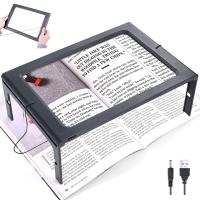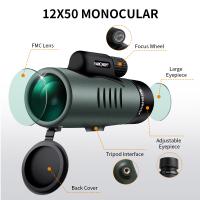How To Connect An Ip Camera To Wifi ?
To connect an IP camera to WiFi, follow these steps:
1. Connect the camera to a power source and turn it on.
2. Use an Ethernet cable to connect the camera to your router or modem.
3. Log in to your router's admin page and find the IP address of the camera.
4. Open a web browser and enter the IP address of the camera to access its settings page.
5. Look for the WiFi settings and enter your network name (SSID) and password.
6. Save the settings and disconnect the Ethernet cable.
7. Wait for the camera to reboot and connect to your WiFi network.
Once the camera is connected to your WiFi network, you can access it remotely using a smartphone app or a web browser. Make sure to choose a strong password for the camera to prevent unauthorized access.
1、 Check camera compatibility with Wi-Fi networks
How to connect an IP camera to WiFi:
1. First, make sure your IP camera is powered on and connected to your router via an Ethernet cable.
2. Download the camera's mobile app or software on your smartphone or computer.
3. Open the app or software and follow the instructions to connect the camera to your WiFi network. This usually involves selecting your network from a list of available networks and entering your WiFi password.
4. Once the camera is connected to your WiFi network, unplug the Ethernet cable and place the camera in its desired location.
5. Test the camera's connection by accessing the live feed through the app or software.
It's important to note that some IP cameras may not be compatible with certain WiFi networks. Before purchasing an IP camera, check the camera's compatibility with your WiFi network to ensure a smooth setup process. Additionally, it's recommended to use a strong and secure WiFi password to prevent unauthorized access to your camera's feed.
As technology advances, some newer IP cameras may also offer alternative methods of connecting to WiFi, such as using a QR code or voice commands. Be sure to check the camera's manual or manufacturer's website for the latest instructions.
2、 Connect camera to power source
How to connect an IP camera to WiFi:
1. Connect camera to power source: Before connecting your IP camera to WiFi, you need to connect it to a power source. Most IP cameras come with a power adapter that you can plug into an electrical outlet.
2. Download the camera's app: Once your camera is connected to power, you need to download the camera's app on your smartphone or tablet. The app will allow you to connect your camera to WiFi and access its live feed.
3. Connect camera to WiFi: Open the camera's app and follow the instructions to connect your camera to WiFi. You will need to enter your WiFi network name and password. Once your camera is connected to WiFi, you can access its live feed from anywhere using the app.
4. Test the connection: After connecting your camera to WiFi, it's important to test the connection to ensure that it's working properly. You can do this by accessing the camera's live feed from the app and checking for any delays or buffering.
5. Secure your camera: It's important to secure your IP camera to prevent unauthorized access. You can do this by setting a strong password for your camera and enabling two-factor authentication if available.
In the latest point of view, it's important to note that some IP cameras may have different setup processes, so it's important to refer to the manufacturer's instructions for specific details. Additionally, it's recommended to keep your camera's firmware up to date to ensure that it's protected against any security vulnerabilities.

3、 Install camera software and configure Wi-Fi settings
To connect an IP camera to Wi-Fi, you need to follow a few simple steps. The first step is to install the camera software on your computer or mobile device. This software will allow you to access the camera's settings and configure the Wi-Fi settings.
Once you have installed the camera software, you need to connect the camera to your Wi-Fi network. To do this, you will need to enter your Wi-Fi network name and password into the camera's settings. This will allow the camera to connect to your Wi-Fi network and start transmitting video.
It is important to note that the process of connecting an IP camera to Wi-Fi may vary depending on the brand and model of the camera. Some cameras may require additional steps or settings to be configured before they can connect to Wi-Fi.
In addition, it is important to ensure that your Wi-Fi network is secure and that you have set a strong password. This will help to prevent unauthorized access to your camera and protect your privacy.
Overall, connecting an IP camera to Wi-Fi is a simple process that can be completed in just a few steps. By following the manufacturer's instructions and taking the necessary security precautions, you can enjoy the benefits of remote monitoring and surveillance from anywhere in the world.

4、 Connect camera to Wi-Fi network
How to connect an IP camera to WiFi is a common question among those who want to monitor their homes or businesses remotely. The process is relatively simple and can be done in a few steps.
First, make sure that your IP camera is compatible with WiFi. Most modern IP cameras come with WiFi connectivity, but it's always best to check the manufacturer's website or user manual to confirm.
Next, connect your IP camera to a power source and turn it on. Then, use an Ethernet cable to connect the camera to your router. This will allow you to access the camera's settings through your computer or mobile device.
Once you have access to the camera's settings, look for the WiFi setup option. This may be labeled differently depending on the manufacturer, but it should be easy to find. Follow the on-screen instructions to connect the camera to your WiFi network.
After the camera is connected to your WiFi network, disconnect the Ethernet cable and place the camera in the desired location. You should now be able to access the camera's live feed from anywhere with an internet connection.
It's important to note that some IP cameras may require additional setup steps, such as creating an account with the manufacturer or configuring port forwarding on your router. Be sure to read the user manual carefully and follow all instructions to ensure a successful setup.






